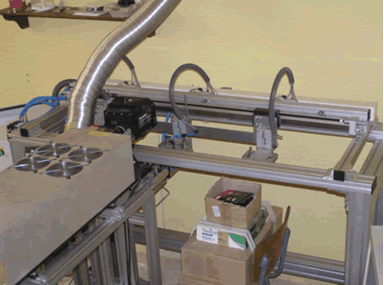In May 2001, the United Nations General Assembly adopted by its resolution 55/255 the Components and Ammunition, supplementing the United Nations Convention against Transnational Organized Crime (the Firearms Protocol). The Firearms Protocol entered into force on July 3, 2005 and until the end of 2008, the Protocol, has been ratified by 75 countries.
The objective of the Firearms Protocol, which is the first legally binding instrument on small arms adopted at the global level, is to promote, facilitate and strengthen cooperation among States in preventing, combating and eradicating the illicit manufacturing of and trafficking in firearms, their parts and components and ammunition.
The countries having signed that Protocol are committed and obliged to adopt a series of crime control measures and implement in their domestic legislation, including the introduction of a system concerning the marking and tracing of firearms.

In practice this means that the signatory countries must
-
Require that a unique, undeletable marking to be applied already during manufacturing of small fire arms and ammunition and such marking should comprise the name of the manufacturer, country or place of manufacturing, or alternatively, to apply an easy to use marking by simple geometrical symbols in combination with an alpha-numerical code, which would permit the easy and reliable identification of the origin of the products – manufacturer and country of origin.
-
Require the application of an appropriate and simple marking of each imported small fire arm and ammunition, which would permit the identification of the importer country, and wherever possible, the year of importation, and to facilitate tracing by competent authorities.
-
Encourage to arms industry to undertake measures against erasing or replacing the marking.
-
Improve the efficiency of the import, export and transit control, by including where necessary the border controls and the trans-border cooperation between police and customs authorities.
Our unique marking technology permits the application, at the same time, of a visible and hidden marking of small fire arms and ammunitions, spare parts and other hardware. This is achieved by using a visible image (e.g. a serial number or a logo), which carries additional hidden information at different encoding levels. Such information may be added by modulation the space coordinates of some characters, digits or signs of the visible marking.
Each marked point can carry a variety of hidden (secret) information at the different levels of encryption, provided by a particular government entity - agency, organization, etc. Every single marking is unique since it is controlled by a special algorithm and software, including a generator of random values for the different parts or products, as decided by the user.
The link and relationship between the visible image (information, number, logo, etc.) and the embedded (hidden, secret) information are recorded in a database, which is provided to the user on a CD-ROM/DVD-R (a write only media), which protects such database against unauthorized modifications or corrections.

 Home
Home
 About us
About us
 Services
Services
 Managment
Managment
 Technologies
Technologies
 Contacts
Contacts